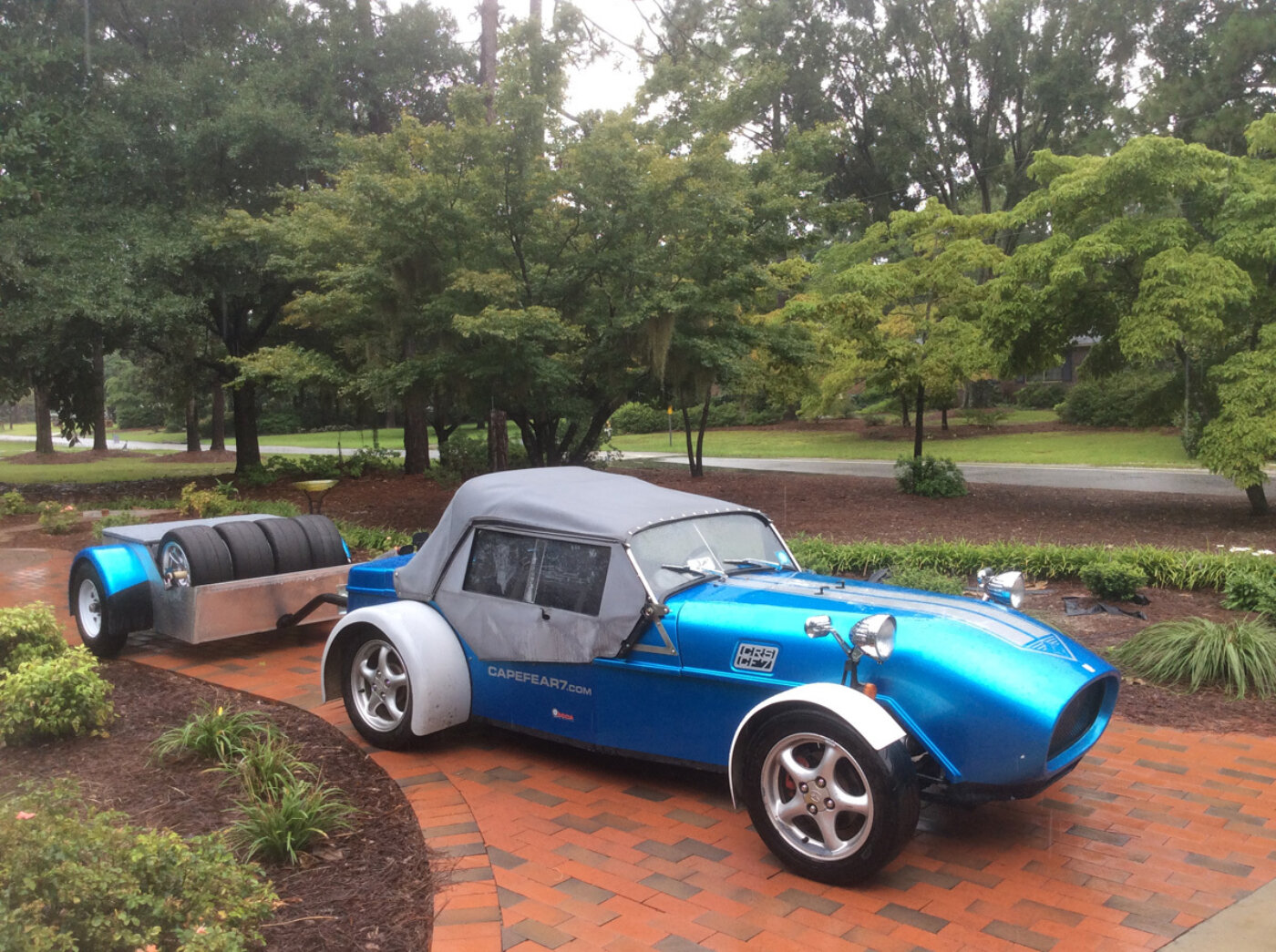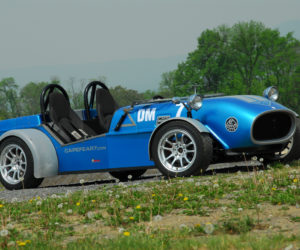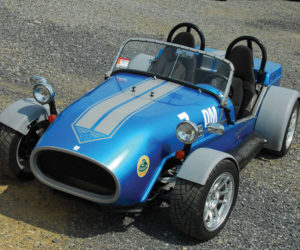
CapeFear7 Adhesive
We came across an interesting alternative for panel fastening from David Culp of C.R.S. which offers the CapeFear7. Here’s what he shared:
In the early 1990s while building a Factory Five Kit Cobra I promised myself that my next kit, be it customer or my own, I would not drill, de burr and rivet again. Having an aviation background, I was familiar with structural adhesives used in commercial aircraft construction. The adhesive we chose was from Fusor Products because the company had a training class at in our area and we were familiar with the products.
Today there are many choices of structural adhesives, so whatever one you choose, be sure to match your needs and give yourself ample work time with your selection. We bond bare metal to bare metal on the CapeFear7 CF7, following the adhesive manufacturer’s recommendations. First we clamp and drill alignment holes into the corners of the sheet metal and frame tube. We then mark the bonding area onto the sheet metal to be bonded to the frame tubing. Using a one-inch (size of tubing) flapper sanding disk on the sheet metal and 80-grit disc on the tubing, we prepare the marked area for the bonding.
Just prior to laying the adhesive on the area to be bonded, it’s cleaned per manufactures instructions. We assemble our clamps and plywood clamping surfaces. We then apply a ¼-inch bead of adhesive on the center of the tube surface to be bonded and insert rods into the alignment holes in the sheet metal and frame. Using the guide rods, lower the sheet metal onto the tubing, which should give you perfect alignment of the panel. If for some reason it is not aligned, slide it (but do not lift and break the bond) to get the alignment you want. Now slide the plywood clamping surface on, still using your aligning rods and clamp. Most adhesives have small glass balls in them to keep you from squeezing out the adhesive no matter how hard you clamp and let cure.
If you are doing panel-to-panel, like foot wells, I do use pop rivets at the corners and long C clamps with wood and angle iron clamping surface to apply pressure. If we cannot use clamps a rivet about every four inches applies enough pressure for a good bond with the Fusor Products we use.
In the six years of using adhesive we have had only one panel fail after five years and over 48,000 miles. Our very first floor panel, we lifted a corner to get alignment, the area came loose (note above warning about lifting). Since this is our test car I just sealed the area with silicon to prevent rust and the remaining area has increase or not failed at 55,000-plus miles.







Comments for: Bonding Moment
comments powered by Disqus